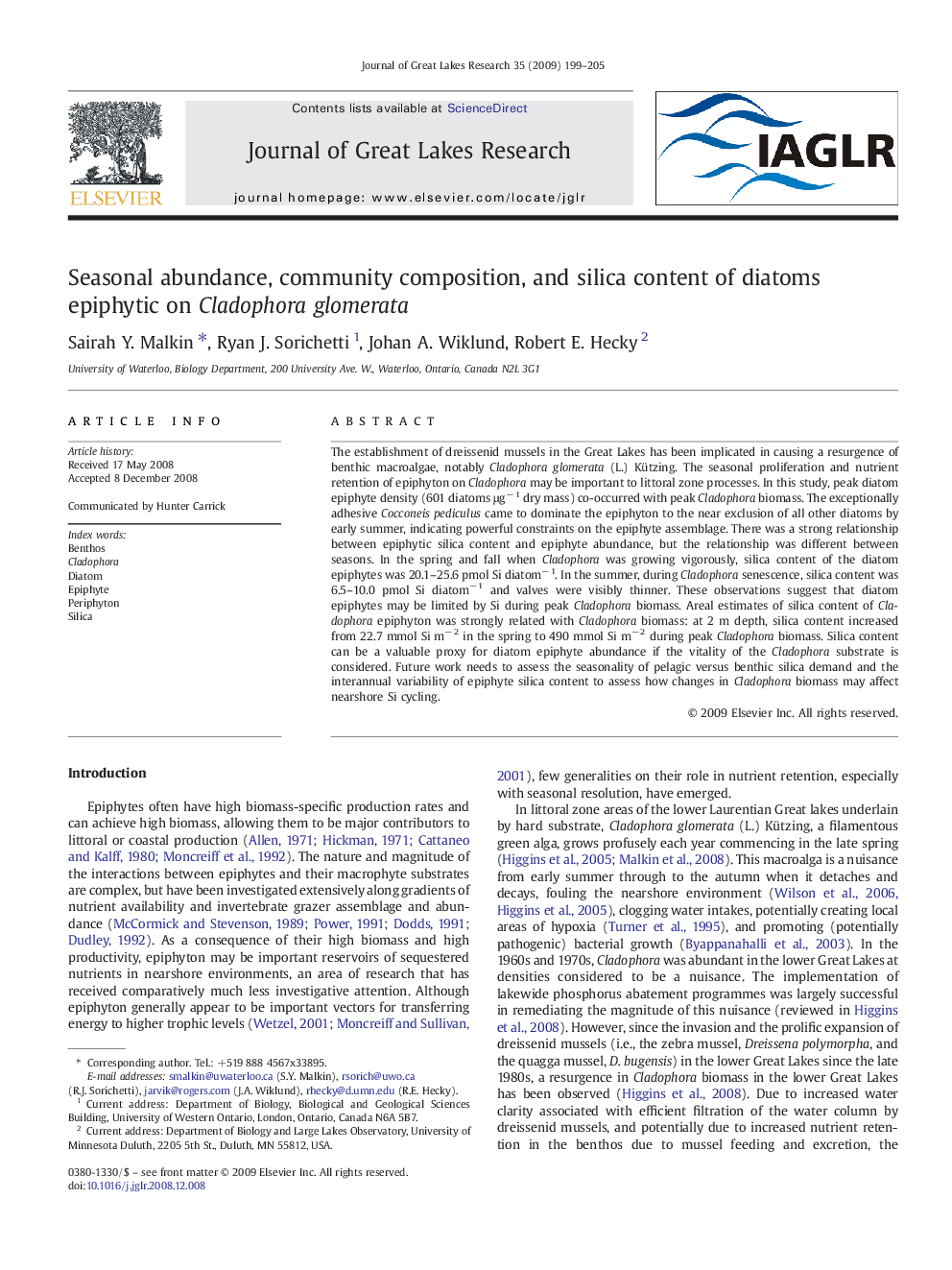| Article ID | Journal | Published Year | Pages | File Type |
|---|---|---|---|---|
| 4399361 | Journal of Great Lakes Research | 2009 | 7 Pages |
The establishment of dreissenid mussels in the Great Lakes has been implicated in causing a resurgence of benthic macroalgae, notably Cladophora glomerata (L.) Kützing. The seasonal proliferation and nutrient retention of epiphyton on Cladophora may be important to littoral zone processes. In this study, peak diatom epiphyte density (601 diatoms μg− 1 dry mass) co-occurred with peak Cladophora biomass. The exceptionally adhesive Cocconeis pediculus came to dominate the epiphyton to the near exclusion of all other diatoms by early summer, indicating powerful constraints on the epiphyte assemblage. There was a strong relationship between epiphytic silica content and epiphyte abundance, but the relationship was different between seasons. In the spring and fall when Cladophora was growing vigorously, silica content of the diatom epiphytes was 20.1–25.6 pmol Si diatom− 1. In the summer, during Cladophora senescence, silica content was 6.5–10.0 pmol Si diatom− 1 and valves were visibly thinner. These observations suggest that diatom epiphytes may be limited by Si during peak Cladophora biomass. Areal estimates of silica content of Cladophora epiphyton was strongly related with Cladophora biomass: at 2 m depth, silica content increased from 22.7 mmol Si m− 2 in the spring to 490 mmol Si m− 2 during peak Cladophora biomass. Silica content can be a valuable proxy for diatom epiphyte abundance if the vitality of the Cladophora substrate is considered. Future work needs to assess the seasonality of pelagic versus benthic silica demand and the interannual variability of epiphyte silica content to assess how changes in Cladophora biomass may affect nearshore Si cycling.
